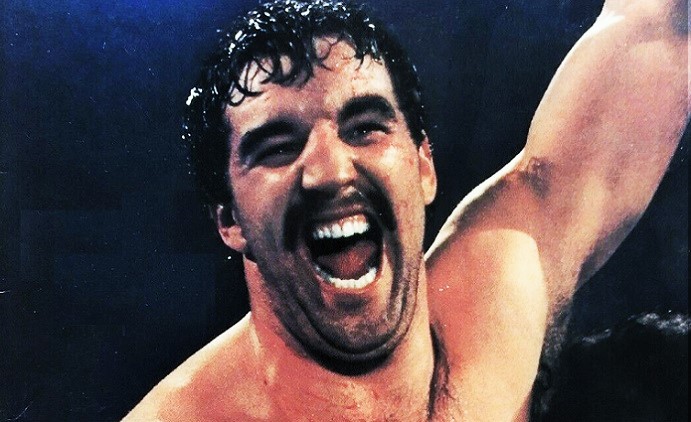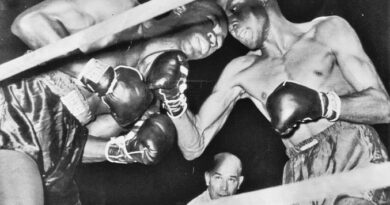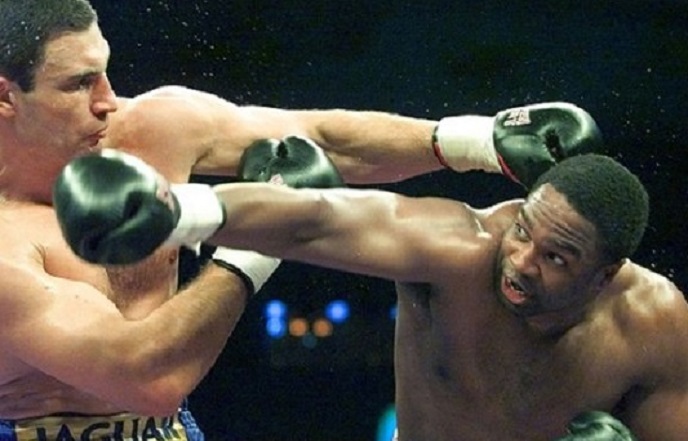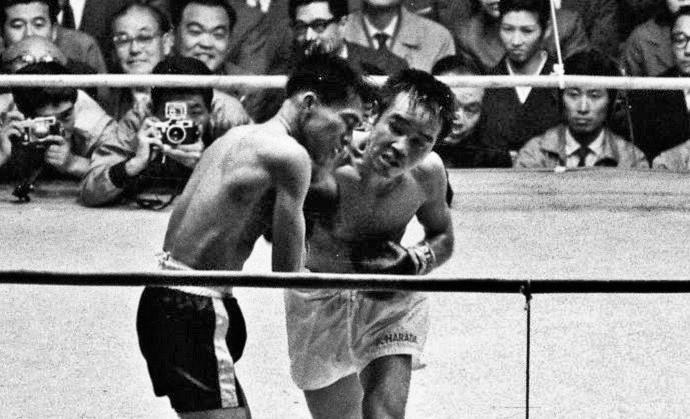May 25, 1980: Cooney vs Young
“I’m going to win this fight, going to win it big. I’ve trained hard for this and I’ve got it all together. I hear this Cooney kid is a puncher. Listen, I’ve fought punchers before and forgotten their names. Cooney is just another one.”
The words belong to late heavyweight contender Jimmy Young and were uttered to scribe Randy Gordon ahead of the veteran’s scheduled bout with Gerry Cooney, the match to be aired on live national television. And Young gets points for telling the truth: he had fought “punchers” before, some of the biggest in heavyweight history in fact.

The truth was Jimmy Young, with a record of 25-9-2, was one of the most experienced heavyweights around, having given Ken Norton and Muhammad Ali highly competitive tilts and boasting wins over Earnie Shavers and George Foreman, two of the most powerful fighters in boxing history. So one must forgive Young for thinking a scrap with Gerry Cooney didn’t represent anything he couldn’t handle. After all, while Jimmy had been around the top tier of the heavyweight division for years, Cooney was just the flavour of the week, a green, unproven pretender, riding a wave of excitement that had more to do with his pasty complexion than his actual skill as a prizefighter. Or so Young thought.

Looking back, Cooney vs Young was another classic “crossroads fight,” the stakes high and the consequences profound. This was the match that made Gerry Cooney a legit top contender for the heavyweight title, and officially made Jimmy Young a has-been. After this, Gerry would knock out two of Young’s former opponents, Ron Lyle and Norton, and by that point Cooney was a sensation, a prizefighter worth millions. But it was his battle with the man some felt had been cheated of a win over the great Muhammad Ali that marked the turning point and inspired millions of sports fans to crowd the Cooney bandwagon.

But before Cooney vs Young actually happened, the truth was it represented a serious test for Gerry, Jimmy Young being a boxer not to take lightly. Having been an active professional since 1968, he had no doubt forgotten more ring wisdom than the young Cooney possessed. His record was spotty, and he was years from his prime and his ability to give Ali, Norton and Foreman all kinds of trouble, but at the very least he figured to provide a means by which to assess Cooney’s potential. Still slippery and cagey, if anyone knew how to exploit the weaknesses of a novice pro, it was the tricky, seasoned prizefighter from the great fight city of Philadelphia.

“Young is in terrific shape,” stated one of the veteran’s sparring partners, Randall (Tex) Cobb, during the build-up to the match. “He’s moving real well. Looks like the Young of old. He’s nearly impossible to hit.”
Such statements no doubt helped to fill seats in the Atlantic City Convention Hall, and indeed it was a capacity crowd that witnessed the match, along with millions watching on national television. But instead of a dramatic and competitive battle, what everyone saw instead was the birth of a phenomenon, the emergence of a new and potent force in boxing.

Right from the opening bell, Cooney, 22-0 with 18 knockouts, took charge, his advantages in height and reach allowing him to control the fight behind a stiff jab that forced Young to give ground. The veteran fought from a half-crouch, circling to his left away from Cooney’s vaunted hook, the punch that everyone knew was the bigger man’s most dangerous weapon. Near the end of the round it was Young who snapped home a hard hook of his own, but the blow had little effect; Jimmy had never been known for his punching power.
In round two the pace picked up and so did Cooney’s attack as he forced Young to the ropes and unloaded big punches to the older man’s ribs. But between rounds Young told his corner, “I think I’ve got his number.”
Very soon that sentiment proved to be so much wishful thinking as Cooney continued to stalk in round three, blasting away with heavy artillery to the body. Then, midway through the round, the bigger man struck with a hard jab to Young’s face, followed by a vicious left hook and a powerful right cross. The blows landed flush and as the veteran backed away, seemingly stunned, he pawed at his right eye where suddenly the blood was flowing freely: Cooney’s punches had ripped open Young’s left eyebrow.

After the fight, Young’s trainer, George Benton, would insist the wound had to have been the result of an elbow or a head butt. “No punch,” the veteran trainer and former top middleweight contender insisted, “can open a cut that wide or that deep.” But he was wrong. Nothing but leather struck Young’s face prior to it being covered with blood. Just as Cooney’s punches had torn open the mug of John “Dino” Denis in their grudge match six months before, Gerry’s awesome power had ripped a deep gash on Jimmy Young’s face.
Hurt and bleeding, Young retreated to the ropes and crouched, hoping to evade Cooney’s follow-up assault, but a thudding right to the body caused him to groan loud enough for those at ringside to hear, despite the roar of the excited crowd. The bout turned into a thrilling brawl as a half-blind Young had little choice but to battle Cooney toe-to-toe. The veteran landed some solid shots but he absorbed many more in return and at the bell, with his face a mask of blood, he walked slowly to his corner, like a man turning away from some terrifying and wholly unexpected truth.
Round four was a slaughter. Only the veteran’s toughness and pride kept him on his feet and prevented the match from being stopped. Knowing Young could not hurt him, and that the contest was all but decided, Cooney unleashed a fearsome attack, slamming both fists to Jimmy’s body before blasting him with hooks and right hands to the head, the blows reopening the deep gash over the veteran’s eye and sending a spray of blood over the spectators at ringside. Young threw just enough punches to prevent the referee from stopping the fight and at round’s end he staggered back to his corner like the survivor of a train wreck, his face bathed in crimson. Seconds later the ringside doctor signaled the match had to be stopped and a jubilant Cooney raised his arms high.
And so, in just twelve minutes of action, Gerry Cooney went from being an exciting prospect with a big left hook, to the most feared contender in the heavyweight division. Brutal, first round knockouts of Lyle and Norton would soon follow, and then the stage was set for one of the biggest and most lucrative title fights in boxing history. –Neil Crane






